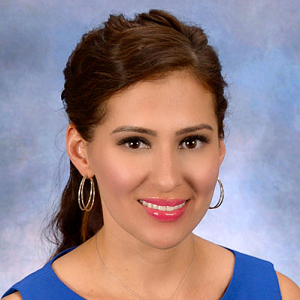The average tenure of a worker in the United States is 4.1 years, according to the Bureau of Labor Statistics. Older workers tend to stick around longer — 9.8 years on average for those between 55 and 65 years old and 9.9 years for those older than 65 — but the fact employees are switching jobs more often is undeniable.

Whether this evolving trend is good news or bad, however, depends on a credit union’s perspective and approach to employee engagement.
Jessica Martinez joined Air Force Federal Credit Union ($660.0M, San Antonio, TX) in 2021 as the vice president of human resources. Prior to that, she led the HR teams at San Antonio’s Gonzaba Medical Group, where she managed the health care group’s employee lifecycle.
As a relatively new credit union outsider who embraces a progressive approach to HR, Martinez has helpful insight on what it takes to keep an employee — and when it’s time to say goodbye.
Redefining What’s Realistic
When Martinez joined AFFCU, she noticed it wasn’t uncommon for the employees she calls a “credit union lifer” to have worked for the credit union for 15, 20, or even 30 years. One of the underlying reasons for this longevity was AFFCU’s pension plan, which older workers found attractive until rates threatened to tank its value in 2023. That’s when a number of legacy employees decided to retire or find employment elsewhere.
This shift combined with the larger employment environment pushed the leadership team at AFFCU to rethink its approach to talent.
It stopped dismissing candidates looking to pursue new opportunities as “job-hoppers” and now recognizes that individuals and organizations can outgrow each other. Better yet, it acknowledges that it might get only a year or two of valuable service from employees before other opportunities emerge, especially for driven individuals.
“We’re in a crunch for talent and we want fresh, new perspectives,” Martinez says.
AFFCU looks to recruit those who believe in the credit union’s mission and want to be intentional about bringing their expertise to the organization while keeping up with emerging trends. To do that, the credit union had to re-evaluate its benefits.
“We wanted to incentivize our team to keep up with the latest trends and partner with them to provide benefits that have value in their daily lives, not simply tie them here,” Martinez says.
AFFCU froze its pension plan and is continually seeking ways to improve its benefits package. For example, it is offering more professional development opportunities and matching retirement savings up to 6%. It also pays 100% of employees’ health insurance, a rather uncommon benefit that can represent hundreds of dollars every month.
Perks like these, along with a starting rate of $17 per hour, well above the local minimum wage of $7.25, are having a positive impact on retention and recruitment alike.
Partners With Employees
Along with enticing benefits, AFFCU is offering more flexibility at work. Although it required employees to return to the office, the credit union understands the importance of managing the demands of both work and home life. Managers have the option to offer flexibility and different schedules for staff members. Talking about how to integrate work and home lives and proactively partnering with employees helps the credit union ensure its workforce isn’t overly burdened.
CU QUICK FACTS
AIR FORCE FCU
DATA AS OF 09.30.24
HQ: San Antonio, TX
ASSETS: $660.0M
MEMBERS: 53,144
BRANCHES: 7
EMPLOYEES: 133
NET WORTH: 8.1%
ROA: 0.36%
Although not all positions, such as member-facing staff, can take advantage of flexible scheduling, AFFCU looks for ways it can support all employees when they have appointments or other needs.
“We have more of a people-focused approach in understanding what you’re dealing with outside of work,” Martinez says.
AFFCU also is considering student loan repayment assistance to reward those who have furthered their education and are bringing their skills and knowledge to the credit union.
Ultimately, AFFCU wants to be an employer of choice for employees rather than a place to stick out a job for a pension or legacy benefit.
“We want our employees to bring their best selves to work,” Martinez says. “We’re listening to learn what they want to see and how we can keep up with their expectations.”
Open To Evolution
In terms of advice for others, Martinez encourages credit union professionals at all levels to be open to evolution and find a purpose in the work they do each day.
“If you struggle to find a purpose, talk to someone who can help you identify your why and what you enjoy about where you spend most of your time,” Martinez says.
In uncertain times, credit unions that know their North Star are poised for success. Learn more in “Find Your Purpose, Find Your Path.”
Skilled human resources professionals help employees connect the dots and discover something meaningful in their daily work or help them capitalize on what the credit union offers in terms of professional purpose. Identifying the value and meaning of daily work results in employees being more fully engaged and impacts both the member experience and the long-term results of the credit union.
For some team members, expanding their professional knowledge by learning about another department might be enriching and could lead to a new career path. Others might find fulfillment in outside classes covered by tuition reimbursement.
“We’re more open now than ever to partner with our employees and help them find what fills their cup,” Martinez says.
Think Differently. Lead Purposefully
Rethink how your credit union serves its employees with Sustainable Business Strategy, a virtual learning experience Callahan & Associates offers in collaboration with Harvard Business School Online. Don’t wait registration for 2024 sessions closes January 17th, 2024.
LEARN MORE & REGISTER TODAY
